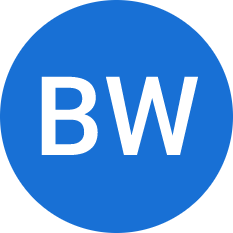Building a house without a blueprint means chaos, confusion, and costly mistakes. The same applies to business projects without a Business Requirements Document (BRD).
Without a clear roadmap, teams risk miscommunication, scope creep, and endless revisions. In fact, 37% of projects fail due to unclear objectives, and nearly half derail because of misalignment between business and project goals.
A BRD holds a project together, translating big-picture ideas into detailed requirements that teams can execute effortlessly. But where do you start? What should it include? And how do you ensure it’s both comprehensive and easy to follow? That’s what we’ll discuss in this blog.
What Is a Business Requirements Document (BRD)?
A Business Requirements Document (BRD) is a detailed document that outlines a project’s goals, needs, and expectations from a business perspective. It serves as a bridge between stakeholders and technical teams, ensuring everyone understands what needs to be built and why. A well-structured BRD reduces miscommunication, prevents scope creep, and aligns all project efforts toward a common objective.
By clearly documenting business requirements upfront, organizations can streamline decision-making, improve cross-team collaboration, and avoid costly revisions. A BRD acts as a roadmap, guiding teams through the development process while keeping the project aligned with business goals.
For example, imagine a retail company that wants to develop an online ordering system. The BRD would specify key business needs, such as allowing customers to browse products, place orders, and make payments securely. It would also define success criteria, potential risks, and any compliance requirements to ensure a smooth rollout.
What Should a Business Requirements Document Include?
A BRD outlines a project’s objectives, needs, and expectations, ensuring alignment between stakeholders, developers, and end-users. But what does a business requirement document contain?
Project Overview
The BRD should start with a high-level project summary, including its purpose, scope, and expected outcomes. This section sets the context for stakeholders and clearly explains why the project is being undertaken.
It may also include background information, addressed business challenges, and the project’s alignment with company goals.
Objectives & Goals
Clearly defining the project’s objectives ensures that all stakeholders have a common understanding of its intended impact.
This section should outline high-level business goals and specific, measurable objectives, such as improving efficiency, increasing customer satisfaction, or reducing costs.
Stakeholder Roles & Responsibilities
A BRD must identify all key stakeholders, including executives, project managers, end-users, and technical teams. It should define their roles and responsibilities, ensuring accountability and effective collaboration throughout the project lifecycle.
Functional Requirements
Functional requirements describe the features and capabilities the system or solution must have.
These may include user interface specifications, workflow details, automation needs, and integration with existing systems. Clearly defining these ensures developers build a solution that meets business needs.
Non-Functional Requirements
Beyond functionality, a BRD should specify performance, security, scalability, and usability requirements.
These factors influence the system’s long-term success and must be addressed early to avoid costly changes later. Examples include system uptime expectations, data protection measures, and response time benchmarks.
Scope & Limitations
The document should define what the project will and will not include to prevent scope creep. Outlining clear boundaries ensures stakeholders understand the intended deliverables and constraints, avoiding misaligned expectations.
Assumptions & Dependencies
Every project operates within a set of assumptions and dependencies. This section documents factors impacting project success, such as reliance on third-party vendors, available resources, or external regulatory requirements.
Acknowledging these upfront helps in risk mitigation and contingency planning.
Success Metrics & Acceptance Criteria
Establishing measurable success criteria ensures that all stakeholders can objectively assess whether the project meets its intended goals.
Metrics may include performance benchmarks, user adoption rates, or compliance with industry standards. This section also defines how the final deliverable will be validated and approved.
Timeline & Milestones
A project timeline with key milestones helps track progress and align the team on deadlines.
This section should outline estimated completion dates for different phases: planning, development, testing, and deployment. It ensures stakeholders can monitor progress and make informed decisions if adjustments are needed.
Risks & Mitigation Strategies
Identifying potential risks early helps teams prepare for challenges that may arise. A well-documented risk assessment should outline possible obstacles, their likelihood, and mitigation strategies.
This proactive approach enhances project resilience and reduces the chances of unexpected failures.
Sign-Off & Approval Process
The BRD should include a sign-off section where key stakeholders review and approve the document to formalize agreement and accountability. This ensures consensus on project requirements before moving forward with implementation.
What Are the Benefits of Documenting Business Requirements?
Documenting business requirements ensures that all stakeholders clearly understand project goals, expectations, and deliverables. Here are the key benefits of maintaining well-structured business requirements documentation:
Clear Project Scope & Expectations
A documented set of business requirements defines the project scope, objectives, and constraints. It prevents misunderstandings by outlining what is included and excluded from the project, ensuring all stakeholders share the same vision.
This clarity helps avoid scope creep, where additional features or changes are introduced without proper assessment, leading to delays and budget overruns.
Enhanced Stakeholder Alignment
Projects often involve multiple stakeholders with different perspectives, such as business leaders, developers, end-users, and external partners.
A detailed business requirements document (BRD) aligns all parties by capturing stakeholders’ needs and expectations, minimizing conflicts, and ensuring smooth collaboration throughout the project lifecycle.
Improved Resource Allocation
By clearly defining requirements, businesses can accurately estimate the resources—time, budget, and personnel—needed for project completion.
This prevents over- or under-allocation of resources, ensuring that teams work efficiently and that the project stays on track without unnecessary delays or costs.
Enhanced Communication & Collaboration
A BRD is a single source of truth that bridges communication gaps between technical and non-technical teams.
It provides a structured discussion framework, ensuring developers, designers, and decision-makers can access the same information. This eliminates misinterpretations and streamlines collaboration.
Faster Development & Fewer Revisions
When project requirements are clearly documented, developers and designers have a well-defined roadmap to follow. This minimizes confusion and reduces the need for frequent revisions or last-minute changes.
With well-articulated functional and non-functional requirements, teams can develop solutions more efficiently and with fewer errors.
Improved Risk Management
Documenting business requirements helps identify potential risks, dependencies, and constraints early in the project.
By proactively addressing these risks and outlining mitigation strategies, businesses can reduce the chances of costly setbacks, ensure smoother execution, and minimize disruptions.
Higher Quality Deliverables
A thorough BRD ensures project outcomes align with business objectives and user expectations.
By defining clear success criteria and acceptance metrics, businesses can measure performance effectively and deliver solutions that meet or exceed stakeholder requirements. This leads to higher customer satisfaction and better long-term results.
Easier Compliance & Auditing
Documenting business requirements is essential for compliance in industries with strict regulatory requirements, such as finance, healthcare, or legal sectors.
A BRD provides a formal record that can be referenced during audits, helping businesses demonstrate adherence to industry standards and legal guidelines.
Efficient Change Management
Changes may be necessary as projects progress due to evolving business needs or external factors.
A well-maintained BRD makes tracking modifications, assessing their impact, and implementing changes systematically easier. This ensures that updates are made with minimal disruption and aligned with the project’s goals.
Long-Term Knowledge Retention
A documented set of business requirements serves as a valuable reference for future projects, training, and onboarding new employees.
It ensures that institutional knowledge is preserved, reducing reliance on specific individuals and helping teams maintain continuity even when staff members change.
What Is the Difference Between Business Requirements & Functional Requirements?
Business requirements define the “why” behind a project—what the organization aims to achieve and how the solution aligns with its business objectives.
They focus on high-level needs such as increasing efficiency, improving customer experience, or meeting regulatory standards. These requirements are usually outlined in a Business Requirements Document (BRD) and are intended for stakeholders, decision-makers, and business analysts.
Functional requirements, on the other hand, define the “how”—the specific features, behaviors, and functionalities that a system or software must have to fulfill business needs. These are technical and detailed, often included in a Functional Requirements Document (FRD) or software specifications.
They cover system workflows, data processing, user authentication, and integration with other platforms. While business requirements describe the problem, functional requirements outline the solution. Here’s a quick comparison overview:
| Feature | Business Requirements | Functional Requirements |
| Focus | High-level business needs and goals | Specific system functionalities and behaviors |
| Perspective | Business stakeholders | Technical team and developers |
| Scope | What the system should achieve | How the system should function |
| Example | “Improve customer satisfaction by 15%.” | “The system should allow users to reset their password via email.” |
FREE. All Features. FOREVER!
Try our Forever FREE account with all premium features!
How to Write a Business Requirement Document
With the right tools, you can streamline documentation, improve collaboration, and ensure all business needs are well-documented without missing crucial details.
Here’s how you can efficiently write a BRD using knowledge base software:
1. Choose the Right Documentation Tool
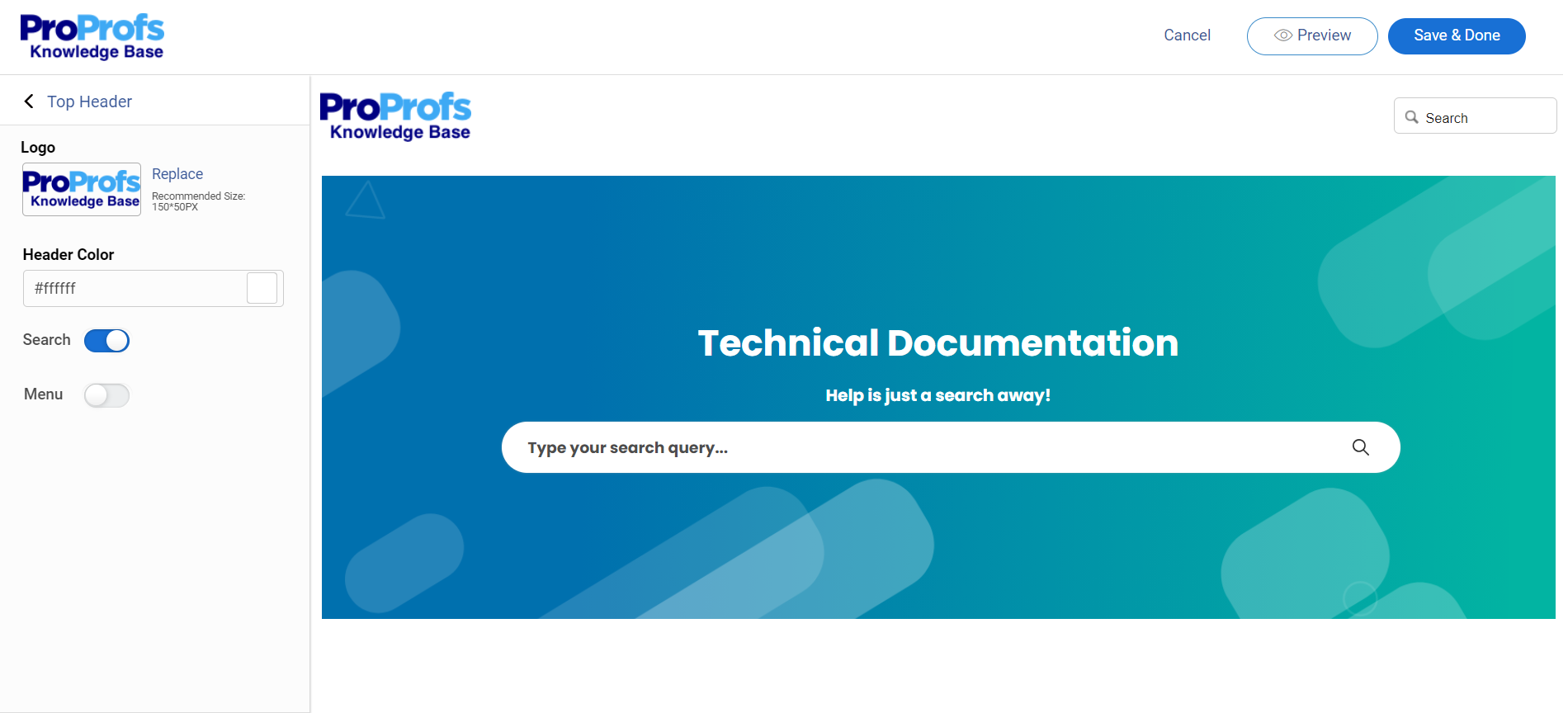
Instead of relying on static documents, use a knowledge base platform that allows for real-time collaboration, version control, and easy accessibility.
For instance, a cloud-based tool like ProProfs Knowledge Base ensures stakeholders can review, edit, and comment on requirements from anywhere, reducing miscommunication and outdated information.
2. Select a BRD Template
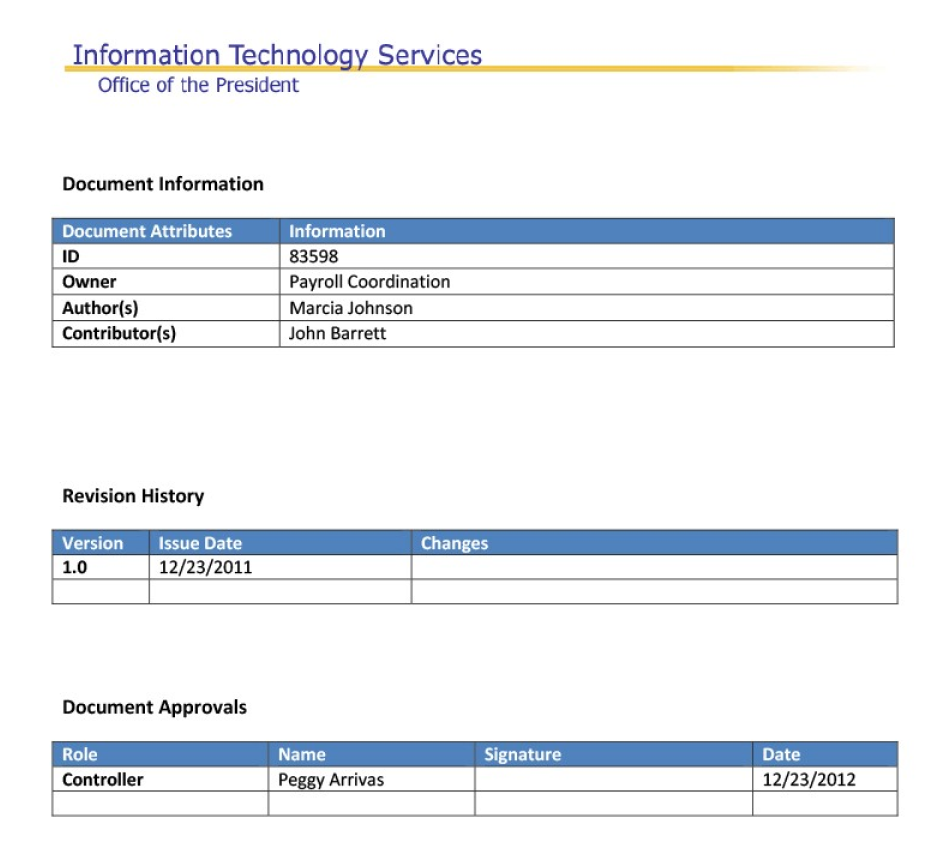
A structured template ensures that all critical components—like business objectives, requirements, scope, and success criteria—are covered.
Many knowledge base tools offer pre-designed templates that standardize documentation, making it easier to maintain consistency across projects.
3. Import Existing Documentation
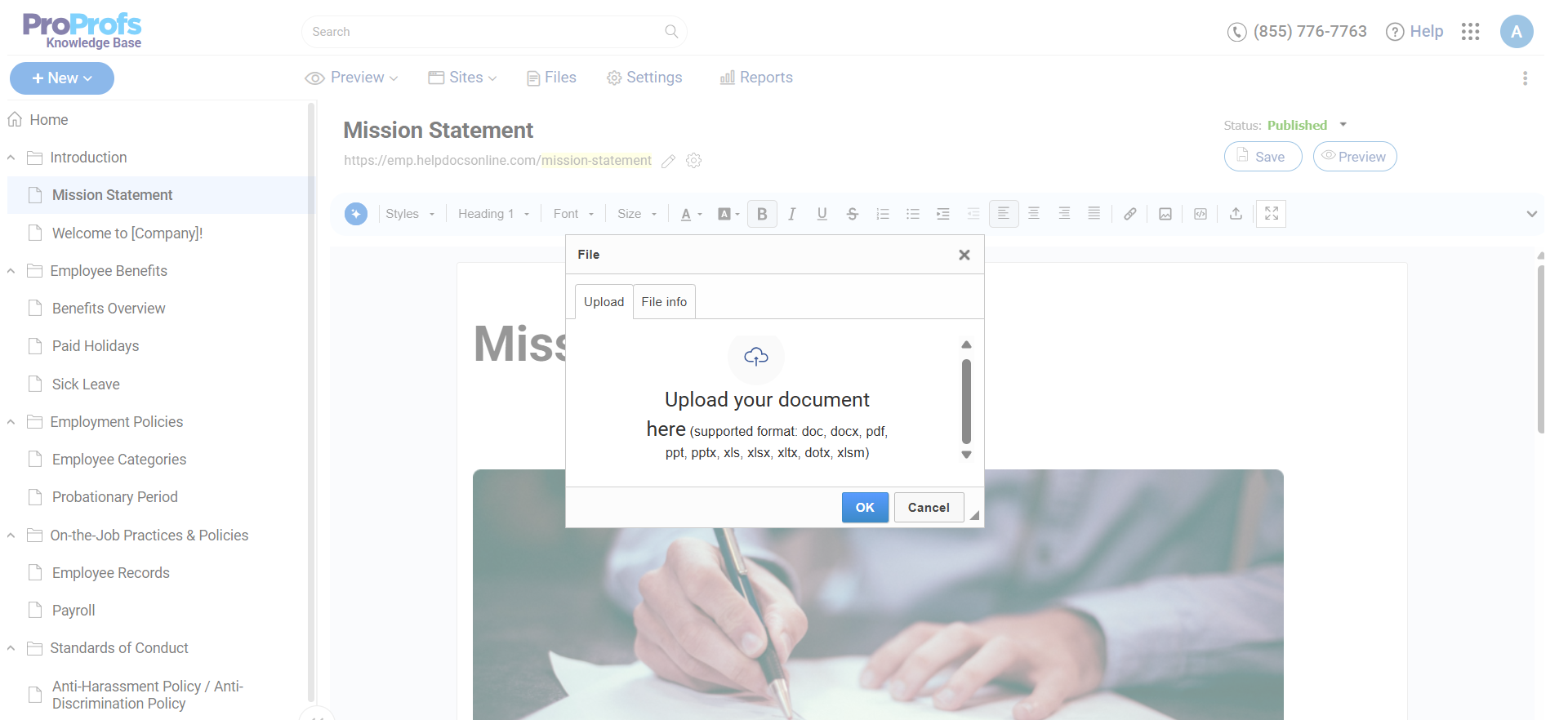
If you have past BRDs, project plans, or requirement lists stored in different formats (Word, Google Docs, PDFs), use the import feature in your knowledge base software to centralize all relevant content. This saves time and ensures historical data is easily accessible.
4. Collaborate in Real-Time

A BRD is a living document that evolves throughout a project. Use a tool that supports real-time collaboration, enabling teams to suggest edits, leave comments, and track changes effortlessly. Version control features help maintain document integrity and prevent conflicting edits.
5. Incorporate Visuals for Clarity
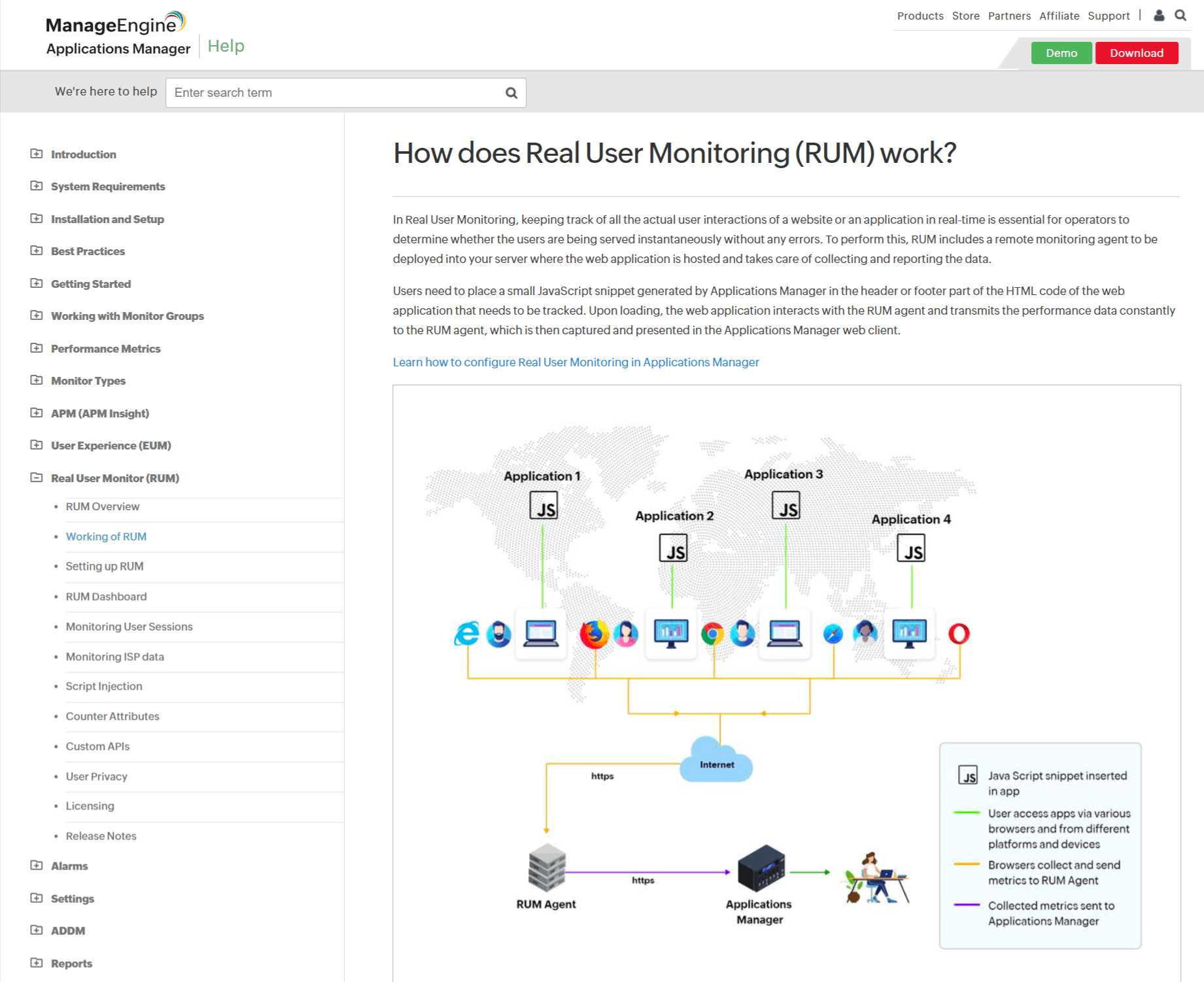
Complex business requirements can be difficult to interpret with text alone. Knowledge base software allows you to embed diagrams, workflows, and tables directly into your BRD, making it easier for stakeholders to understand the proposed solutions.
6. Ensure Accessibility & Searchability
A knowledge base offers advanced search capabilities, making it easy to find relevant sections of the BRD without sifting through endless pages. Organize content into structured categories and use tags to improve navigation.
7. Automate Reviews & Approvals
Manual approval processes slow down documentation. With an approval workflow system, you can assign reviewers, track document status, and set permissions to ensure that only authorized users can make final changes.
What Are Some Business Requirement Document Samples & Templates?
Business requirements document templates provide a structured framework for documenting project needs, ensuring clarity, consistency, and efficiency while reducing errors and omissions.
Business Documentation Template by ProProfs Knowledge Base
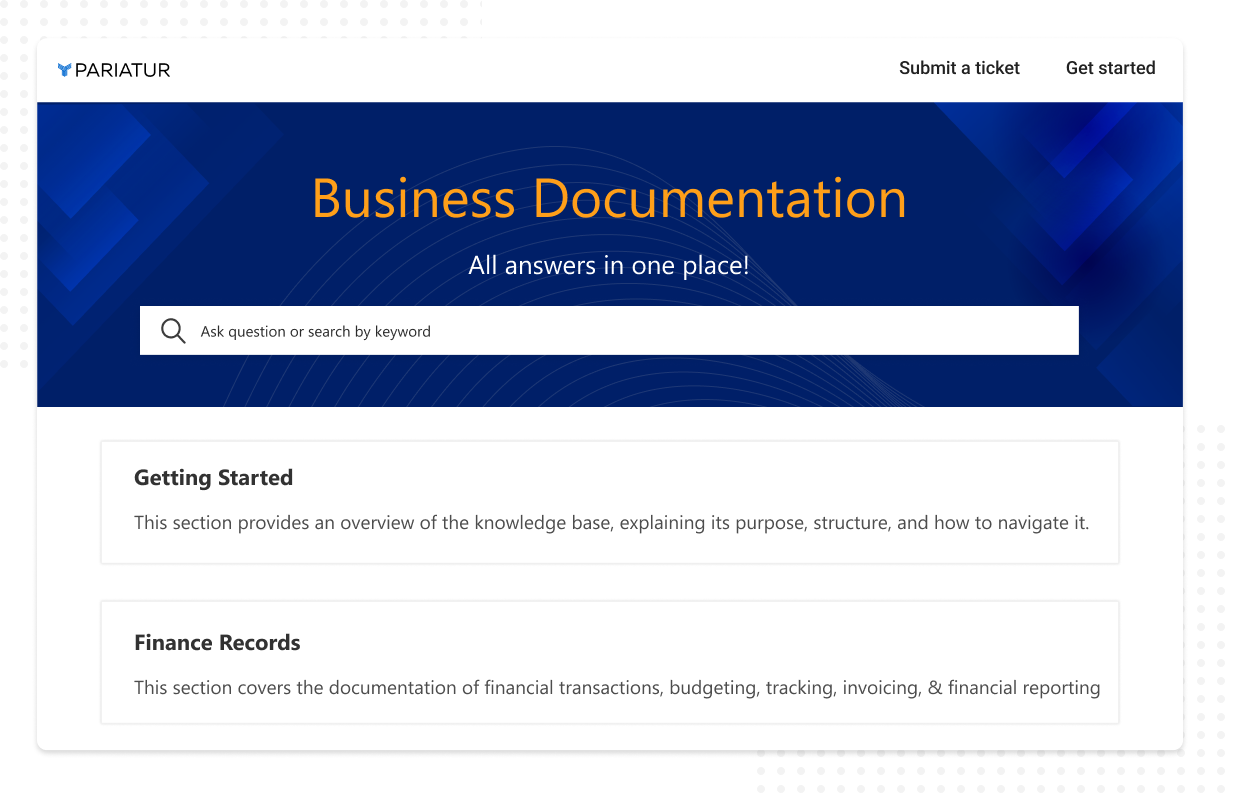
Create a Business Requirements Documentation for Enhanced Clarity & Communication
A well-structured Business Requirements Document (BRD) is essential for clearly defining a project’s objectives, scope, and stakeholder expectations. You can create comprehensive documentation by outlining key components, differentiating business and functional requirements, and utilizing structured templates.
To streamline the process, following a step-by-step approach ensures clarity and consistency. Using templates simplifies documentation, while well-defined requirements help teams stay on track, reducing project risks and improving outcomes.
You can use ProProfs for business requirements documentation for enhanced communication. You can instantly create error-free documents with its AI-powered text editor, which also allows you to improve and summarize your existing content. Explore the tool more or request a demo today!
 Tips
Tips
We’d love to hear your tips & suggestions on this article!
FREE. All Features. FOREVER!
Try our Forever FREE account with all premium features!
 We'd love your feedback!
We'd love your feedback! Thanks for your feedback!
Thanks for your feedback!

